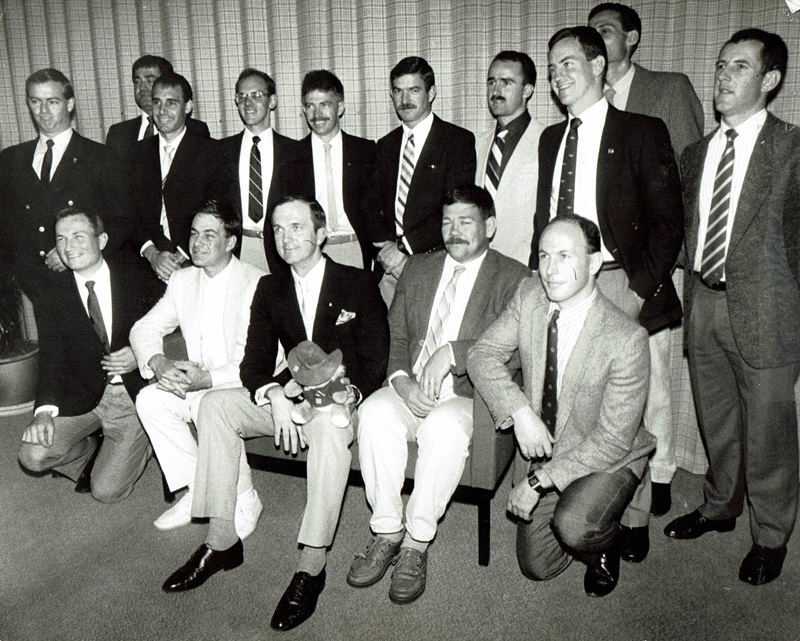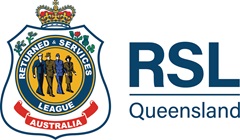
Keeping the peace
14 September 2020- History & commemoration
- Veteran stories
For countries torn apart by war, the appearance of the United Nation’s (UN) Blue Berets is a sign that the first tangible steps have been taken on the road to peace.
Peacekeepers are sent in to some of the most dangerous parts of the world, tasked with bringing peace and stability to regions that have been torn apart by war. While the conflict may have ceased, the danger often remains.
In 1947, four Australian military officers became the first UN peacekeepers in the world when they were deployed to the United Nations Good Offices Commission in the Dutch East Indies (now Indonesia). Since then, Australia has contributed more than 60,000 troops to over 60 peacekeeping operations in countries including East Timor, Somalia, Rwanda, Bosnia Herzegovina, Kosovo, Iraq and Afghanistan.
They have joined military and police personnel wearing the uniforms of more than 120 countries, with only their sky blue berets or helmets to unify them as UN peacekeepers.
Peacekeepers primarily work to reduce the risk of conflicts flaring up again, enabling infrastructure, political processes and social institutions to be rebuilt. In fact, a study by the Rand Corporation showed that peacekeeping operations reduce the risk of conflict recurring by 50 per cent[i].
But over the years, the role of peacekeepers has become more complex. As well as maintaining security, peacekeepers may be involved in facilitating elections, disarming and demobilising former combatants, training military and police personnel and providing humanitarian assistance in the wake of natural disasters.
Peacekeepers in our ranks – from Kashmir…
Toowong RSL Sub Branch President George Hulse served with the United Nations Military Observer Group in India and Pakistan (UNMOGIP). He arrived in the Karakorum Mountains of the Hindu Kush around Kashmir in January 1974.
“It was bitterly cold,” George remembers. “I arrived in January 1974 to one of the coldest winters they’d had. The snow and ice was metres deep and it was an area of the Himalayas where the weather was very changeable – bright and sunny one minute and a blizzard, a complete whiteout, the next.
“The terrain was somewhere between difficult and impossible to negotiate and yet you had two great armies there fighting each other.”
The first military observers had arrived in Kashmir in 1949 to supervise the ceasefire between India and Pakistan, but religious and political tensions between the nations had flared again in 1971. UNMOGIP was tasked with maintaining the fragile peace.
“As military observers, we had to observe and report, but we couldn’t interfere,” George says. “You got to see things you’d never read about in books.
“Some of the senior commanders [on both sides] were Sandhurst graduates and knew each other really well. They might have served together in the same unit before partition. You’d see them hug each other at a meeting in the battle-space which was, at times, in the middle of a minefield and be wondering what was going on!”
He reflects that peacekeepers have to possess a unique combination of traits. “Peacekeepers need to be great at negotiating, and specialists in understanding the human condition. They need to understand both sides of the argument, and have a clear idea of where you’re headed and how to get there. It’s not like being a combat soldier at all.”
…to Tehran…
In August 1988, RSL South Eastern District Vice President Kerry Gallagher AM led the first Australian UN team into Iran as part of the United Nations Iran Iraq Military Observer Group (UNIIMOG).
“When we arrived there, we were put up in the hotel that was then called the Esteghlal, which essentially means the Freedom Hotel,” Kerry says.
“Believe it or not, previously in the days of the Shah it had been the Royal Tehran Hilton, but the only piece of the Royal Tehran Hilton that remained was an etched nameplate above the door. It also had a couple of bullet holes in it, but obviously it hadn’t smashed. That was the only thing that was in any way like you would expect of a Hilton hotel.”
Kerry Gallagher (centre, holding koala) with other members of the Australian contingent of UNIIMOG
Having suffered through eight years of war during which they had lost millions of young men, Kerry says the Iranian people were very welcoming to the peacekeeping force.
“Of an evening when I finished at the UNIIMOG headquarters I used to walk back to the house we had in one of the suburban areas of Tehran and I used to go through the markets – it was just a little bit of a shortcut. And a couple of nights there was a lady, an older lady, who would come out of the store and press a bunch of grapes into my hand and kiss the back of my hand and say, ‘Thank you for bringing peace to my country.’”
Kerry says that, even when the UN is able to broker a truce, there may still be tensions between the two sides that can escalate quickly even over relatively inconsequential matters.
“It was really important internationally that peace was brought to the region. Realistically, the people who brought peace were those couple of hundred people wearing blue berets standing between the two opposing forces.”
…and Somalia
Ipswich RSL Sub Branch Deputy President Michael Blaine arrived in Mogadishu in December 1993 as part of the ASC III, the third rotation in Somalia as part of UNOSOM II.
“Somalia was a mess. It just smelt of death and it was hot and dry, everything was ruined,” Michael says. “It was a bit of an eye opener to go to a country that had been bombed and shot to pieces by their own people in a civil war. And then they had a big drought that followed which wiped out half their population.”
The Australian contingent controlled movement of the food supplies that were being delivered into the devastated country, making sure it got to the regions where it was most needed.
“It’s an honour really to be in a peacekeeping or peacemaking force, because you’re working not just for your own country, you’re working for the United Nations.
“I think the Australian troops who have gone on United Nations tours have done great jobs. I think we can empathise with the people we’re providing security and protection for, and we get a great sense of joy helping other countries in their time of need.”
In 1999-2000, Michael also served on the international peacekeeping mission to East Timor.
A long history of Australian peacekeeping
Australians have played an instrumental role in both UN and multinational peacekeeping operations across the globe.
In fact, the largest deployment of Australian troops since World War II was the non-UN International Force for East Timor (INTERFET), organised to curb violence during East Timor’s transition to independence from Indonesia. Between September 1999 and February 2000, 5,500 personnel were deployed to East Timor, led by Major General Peter Cosgrove.
Australian peacekeepers are currently serving in the Middle East and South Sudan.
|
UN Consular Commission |
Dutch East Indies (now Indonesia) |
1947 |
|
UN Committee of Good Offices (UNGOC) |
Dutch East Indies (now Indonesia) |
1947–1949 |
|
UN Special Committee on the Balkans (UNSCOB) |
Greece |
1947–1951 |
|
UN Commission for Indonesia (UNCI) |
Indonesia |
1949–1951 |
|
UN Commission on Korea (UNCOK) |
Korea |
1950 |
|
UN Military Observer Group in India and Pakistan (UNMOGIP) |
Kashmir |
1948–1985 |
|
UN Commission for the Unification and Rehabilitation of Korea (UNCURK) |
Korea |
1951–1973 |
|
UN Command Military Armistice Commission (UNCMAC) |
Korea |
1953– |
|
UN Truce Supervision Organization (UNTSO) |
Middle East |
1956– |
|
UN Operation in the Congo (ONUC) |
Congo |
1960–1961 |
|
UN Temporary Executive Authority (UNTEA) |
West New Guinea |
1962–1963 |
|
UN Yemen Observation Mission (UNYOM) |
Yemen |
1963–1964 |
|
UN Peacekeeping Force in Cyprus (UNFICYP) |
Cyprus |
1964–2017 |
|
UN India–Pakistan Observation Mission (UNIPOM) |
India, Pakistan |
1965–1966 |
|
UN Disengagement Observer Force (UNDOF) |
Israel, Syria |
1974 |
|
Second UN Emergency Force (UNEF II) |
Sinai |
1973–1979 |
|
UN Interim Force in Lebanon (UNIFIL) |
Lebanon |
1978 |
|
Commonwealth Monitoring Force (CMF) |
Zimbabwe |
1979–1980 |
|
Commonwealth Military Training Team – Uganda (CMTTU) |
Uganda |
1982–1984 |
|
Multinational Force and Observers (MFO) |
Sinai |
1982–1986 |
|
UN Iran–Iraq Military Observer Group (UNIIMOG) |
Iran, Iraq |
1988–1990 |
|
UN Transition Assistance Group (UNTAG) |
Namibia |
1989–1990 |
|
UN Border Relief Operation (UNBRO) |
Thai–Cambodian border |
1989–1993 |
|
UN Mine Clearance Training Team (UNMCTT) |
Afghanistan, Pakistan |
1989–1993 |
|
First Maritime Interception Force (MIF I) |
Persian Gulf, Gulf of Oman, Red Sea |
1990–1991 |
|
Second Maritime Interception Force (MIF II) |
Persian Gulf, Gulf of Oman, Red Sea |
1991–2001 |
|
UN Special Commission (UNSCOM) |
Iraq |
1991–1999 |
|
Operation Provide Comfort |
Iraq |
1991 |
|
UN Mission for the Referendum in Western Sahara (MINURSO) |
Western Sahara |
1991–1994 |
|
UN Advance Mission in Cambodia (UNAMIC) |
Cambodia |
1991–1992 |
|
UN Transitional Authority in Cambodia (UNTAC) |
Cambodia |
1992–1993 |
|
First UN Operation in Somalia (UNOSOM I) |
Somalia |
1992–1993 |
|
Unified Task Force (UNITAF) |
Somalia |
1992–1993 |
|
UN Protection Force (UNPROFOR) |
Former Yugoslavia |
1992 |
|
Second UN Operation in Somalia (UNOSOM II) |
Somalia |
1993–1995 |
|
Cambodian Mine Action Centre (CMAC) |
Cambodia |
1994–1999 |
|
UN Assistance Mission for Rwanda (UNAMIR) |
Rwanda |
1994–1995 |
|
UN Operation in Mozambique (ONUMOZ) |
Mozambique |
1994 |
|
South Pacific Peace-Keeping Force (SPPKF) |
Bougainville |
1994 |
|
Multinational Force (MNF) |
Haiti |
1994–1995 |
|
Accelerated Demining Program (ADP) |
Mozambique |
1994–2002 |
|
UN Verification Mission in Guatemala (MINUGUA) |
Guatemala |
1997 |
|
Implementation Force / Stabilisation Force / Kosovo Force (IFOR / SFOR / KFOR) |
Former Yugoslavia |
1995–2004 |
|
Truce Monitoring Group (TMG) |
Bougainville |
1997–1998 |
|
Peace Monitoring Group (PMG) |
Bougainville |
1998–2003 |
|
UN Mission in East Timor (UNAMET) |
East Timor |
1999 |
|
International Force East Timor (INTERFET) |
East Timor |
1999–2000 |
|
UN Transitional Administration in East Timor (UNTAET) |
East Timor |
2000–2002 |
|
International Peace Monitoring Team (IPMT) |
Solomon Islands |
2000–2002 |
|
UN Mission in Ethiopia and Eritrea (UNMEE) |
Ethiopia, Eritrea |
2001–2005 |
|
International Military Advisory and Training Team (IMATT) |
Sierra Leone |
2001–2003 |
|
UN Mission of Support in East Timor (UNMISET) |
East Timor |
2002–2005 |
|
UN Monitoring, Verification and Inspection Commission for Iraq (UNMOVIC) |
Iraq |
2002–2003 |
|
UN Assistance Mission in Afghanistan (UNAMA) |
Afghanistan |
2003–2004 |
|
Regional Assistance Mission to Solomon Islands (RAMSI) |
Solomon Islands |
2003–2017 |
|
UN Mission in Sudan (UNMIS) |
Sudan |
2005–2011 |
|
UN Office in Timor-Leste (UNOTIL) |
Timor-Leste |
2005–2006 |
|
International Stabilisation Force (ISF) |
Timor-Leste |
2006–2013 |
|
UN Integrated Mission in Timor-Leste (UNMIT) |
Timor-Leste |
2006–2012 |
|
African Union–UN Mission in Darfur (UNAMID) |
Darfur |
2008–2011 |
|
UN Assistance Mission for Iraq (UNAMI) |
Iraq |
2009–2013 |
|
UN Mission in the Republic of South Sudan (UNMISS) |
South Sudan |
2011– |
Source: www.peacekeepingmemorial.org.au
Related News
Loading

